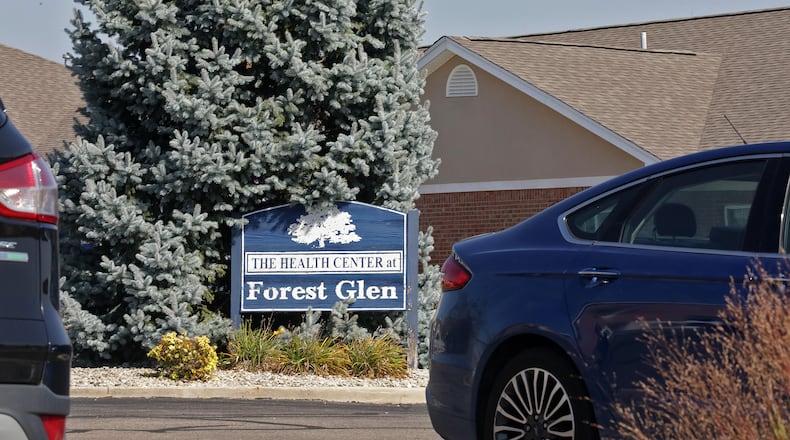The data is as of Oct. 30 from the state’s online dashboard, which tracks 1,279 registered facilities around the state.
Chip Wilkins, Dayton-area Long-Term Care Ombudsman, who advocates for resident rights, said he “loved” that the state is now charting the current policies at nursing homes. He said facilities should be able to host visitation safely as long as there is no current outbreak in the facility and if visitors are making sure to social distance and wear personal protective equipment, or PPE.
“I can’t imagine being isolated in one building for that long without my family," Wilkins said.
The visitation dashboard allows people to view and sort information by facility type, county, visitation status or by a particular facility.
From April 15 to Oct. 21, 2,845 Ohioans living in long-term care facilities died from COVID-19. In addition, 369 residents died earlier when Ohio recorded only whether an individual had been in a nursing home, not other long-term care communities. Visitors and workers with no visible symptoms can introduce the virus into a vulnerable long-term care community.
While nursing homes and assisted living facilities can allow visiting, they are not required. As cases have risen, some facilities have scaled back visiting or never started in the first place.
However, many older adults living in these communities have struggled with the social isolation stemming from visitor restrictions, which can also have a negative health impact. The independent Coronavirus Commission on Safety and Quality in Nursing Homes advised recognizing nursing home residents have rights to visitors.
Dr. Jane K. Straker, an assistant adjunct professor in the Department of Sociology and Gerontology at Miami University, works with various state agencies in Ohio on projects related to nursing homes and aging, including with the Ohio Department of Aging. Straker said before the pandemic began, researchers were only beginning to see how human connection affected older adults. One early study showed social isolation was as dangerous for health as smoking 15 cigarettes a day, she said.
Straker said many nursing facilities had tried previously to create a sense of community within their building. Residents could interact with staff, but also with each other.
But since the pandemic, outside visitation has not only ended, but the activities within nursing homes have also ended.
Patrick Schwartz, a spokesman for LeadingAgeOhio, a trade group that represents about 400 long-term care facilities and hospices in Ohio, said impediments to visitation include infection rates in both the facility and in the facility’s community, along with any staffing challenges.
If a county has a lot of coronavirus cases, the facility is less likely to allow in-person visitors. Staff are needed to make sure families and residents maintain social distance and continue to wear proper PPE.
The inconsistencies between the different rules for visitation shown on the dashboard may also have come from a misunderstanding of how to fill out the forms, said Peter Van Runkle, executive director for Ohio Health Care, another trade group that represents Ohio nursing homes and assisted living facilities., Van Runkle said the state hadn’t given many instructions for filling out the forms for the dashboard.
Van Runkle also said the various nursing homes will come to different conclusions based not just on infection rates and staffing, but how individual administrators or nurses in the buildings feel about having visitation for families verses handling the COVID-19 pandemic.
“Different people are going to come up with different weights in the balance," he said.
How to get help
For people with questions or concerns about a particular visitation policy, the State Long-Term Care Ombudsman advocates for resident rights and is a free resource at OhioOmbudsman@age.ohio.gov or 1-800-282-1206. The ombudsmen can help resolve disputes and advocate for residents' rights to be upheld.
About the Author

